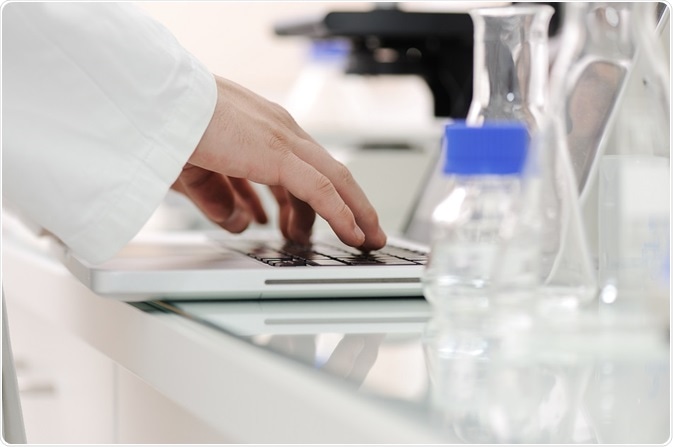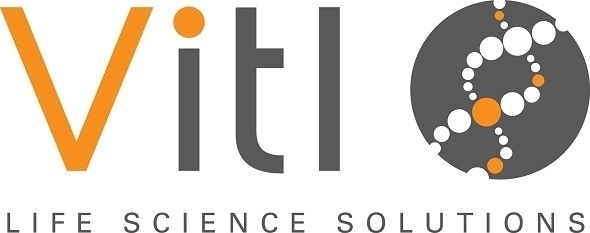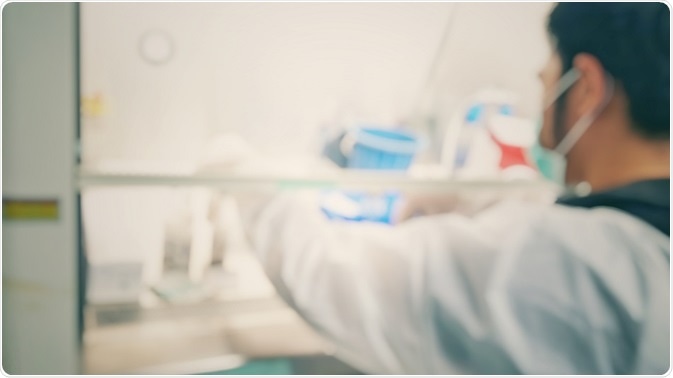
Equipping Lab Instruments with Modern Technology to Benefit Biosafety Level 4 Labs
Biosafety is a vital aspect of laboratory management that refers to the application of safety measures in the handling of microorganisms and biological agents. The implementation of effective biosafety reduces the risk of exposure to infection, both within the laboratory environment and the world outside it.
Credit: BlurryMe/ Shutterstock.com
Biosafety levels
Depending on the specific controls required to contain microbes and biological agents, labs operate in accordance with guidelines for one of four biosafety levels (BSLs 1 to 4).
The pathogens handled in a BSL-1 lab are harmless and unlikely to cause animal or human disease. In a BSL-2 lab, microbes are unlikely to be a serious hazard, but any serious infections that do occur have a limited risk of spreading and can also be effectively treated or vaccinated against.
The pathogens handled in a BSL-3 lab have the potential to cause serious disease, although infection is not usually spread from one person to another and can be effectively treated.
The highest category of biosafety is BSL-4, which is assigned to labs where pathogens pose a high risk of serious and untreatable disease that is readily transmitted from one person to another. Two examples of pathogens handled in these labs are the Ebola and Marburg viruses. BSL-4 labs also handle microbes of unknown origin that require specialized handling until more is understood about them.
The dilemma faced in BSL-4 labs
BSL-4 labs are either located away from other laboratory spaces or housed in an isolated compartment of a shared facility. Staff are protected against deadly microbes in multiple ways.
Researchers wear sealed biosafety suits that pathogens cannot enter, they use Class III biological safety cabinets and tightly-controlled laminar air-flow systems with HEPA or ULPA filters to remove pathogens from the air. The precautions taken in BSL-4 labs protect the staff inside them, whilst ensuring all paths that pathogens have to the outside world are blocked.
However, these restrictions can exacerbate common problems such as hardware malfunctions. When a piece of equipment in a BSL-4 lab breaks, the entire lab must be completely decontaminated before a non-scientist such as an engineer can enter the environment to fix or replace the instrument. This process can take up to several days.
Alternatively, without sterilizing the lab, the equipment can be replaced, or parts can be switched while the original part or piece of equipment is destroyed in a completely sterile manner such as incineration.
This poses a problem for tools that include data storage, as often the data cannot be replaced and therefore a repair is needed. Desktop or laptops are often used in these labs to record and store crucial data and these devices are almost impossible to sterilize without them being destroyed in the process.
Using modern technology to solve the problem

Credit: ESB Professional/ Shutterstock.com
Vitl Life Science Solutions are proposing to solve this problem by equipping lab instruments with modern technologies such as Bluetooth, near-field communication (NFC), internet connectivity and cloud computing, which would communicate with a computer outside of the sterilized lab, either as a backup or as the central processing unit for all experiments.
The cost involved in producing accurate results is a large factor in this highly competitive market. Scientists could analyze the data they have gained from inside the lab without having to enter the lab and complete the sterilization process, providing substantial time and cost savings.
The “internet of things” is now moving into the laboratory space, allowing different instruments to be integrated into one information system to which components can be connected and controlled. Wi-Fi modules that can be hooked up to an external sensor, for example, can monitor temperature, oxygen, carbon dioxide and humidity levels, as well as vibration and mass air flow.
Using “Smart lab” technologies such as Bluetooth, NFC and cloud computing, not only can instruments be monitored from outside of the laboratory, but data can be streamed from electronic lab notebooks, instrument usage and workload can be monitored and experimental workflows can be controlled.
Bluetooth
Bluetooth represents a simple way of linking electronic devices together, to enable the exchange of data over relatively short distances by using wireless, radio wave technology. Sensors equipped with Bluetooth can connect to a Smart phone, a tablet or a computer and instantly stream measurement data that the lab technicians can see, record, analyze and integrate with other software. This is extremely beneficial from a biosafety perspective, as Bluetooth devices allow technicians to monitor their laboratory environment.
Near-field communication
Near-field communication (NFC) is a form of contactless information exchange between devices such as tablets and Smartphones. NFC-based systems enable laboratory data to be instantly and automatically archived and updated for the accurate assessment and validation of test results. The automation of laboratory work processes in this way leads to time efficiency and reduces the chance of human error.
Cloud computing
“The cloud” is a term referring to services that store data and files on servers connected to the internet. This offsets the need for data to be processed and stored within the laboratory, which can be costly and time consuming due to the computing expertise, intricate software and secure, high-speed storage this requires. The various in-house systems used to collect and record data also often lack interoperability, which can slow the sharing of information both within and outside of the laboratory.
As a member of the ITL Group, Vitl Life Science Solutions benefits from 40 years’ experience and expertise in the design, development and manufacture of life-saving medical technology. Vitl believes that incorporating technologies such as Bluetooth, NFC and cloud computing into BSL-4 lab equipment could open up a whole new realm of possibilities and many of the company’s products either already have or are gaining this kind of connectivity.
References
- Nunn, S. Modern Lab Instruments Increase the Chances for Success. Laboratory Equipment, 2012. Available at: https://www.laboratoryequipment.com/article/2012/11/modern-lab-instruments-increase-chances-success
- Schreyer, J. Designing the next generation instrument lab. Laboratory Design, 2016. Available at: https://www.labdesignnews.com/article/2016/06/designing-next-generation-instrument-lab
- World Health Organization. Laboratory biosafety manual. Third edition, 2004. Available at: http://www.who.int/csr/resources/publications/biosafety/Biosafety7.pdf
- Adams, A. Science Under Glass: Inside a Biosafety Level 4 Lab. The Scientist, 2004. Available at: http://www.the-scientist.com/?articles.view/articleNo/15380/title/Science-Under-Glass--Inside-a-Biosafety-Level-4-Lab/
- Centers for Disease Control and Prevention. Biosafety in Microbiological and Biomedical Laboratories. Fifth Edition, 2009. Available at:https://www.cdc.gov/biosafety/publications/bmbl5/BMBL.pdf
- Centers for Disease Control and Prevention. Recognizing the Biosafety Levels. Available at: https://www.cdc.gov/training/quicklearns/biosafety/
- Bluetooth. What is Bluetooth? Why build with Bluetooth? 2017. Available at: https://www.bluetooth.com/what-is-bluetooth-technology/why-build-with-bluetooth
- NFC. About Near Field Communication. 2017. Available at http://nearfieldcommunication.org/about-nfc.html
- BBC. Webwise. What is cloud computing? 2014. Available at: http://www.bbc.co.uk/webwise/guides/what-is-cloud-computing
- Microsoft Azure. What is cloud computing? 2017. Available at: https://azure.microsoft.com/en-gb/overview/what-is-cloud-computing/
- Nature. The Internet of Things comes to the lab. 2017. Available at: http://www.nature.com/news/the-internet-of-things-comes-to-the-lab-1.21383
- SCAN. The Pocket Lab Scientific Multi Sensor Device with Bluetooth. Available at: https://www.scan.co.uk/products/pocketlab-wireless-scientific-measuring-device-7-different-sensors-bluetooth-to-smartphone-tablet-co
- Susanna Spinsante and Ennio Gambi, “NFC-Based User Interface for Smart Environments,” Advances in Human-Computer Interaction, vol. 2015, Article ID 854671, 12 pages, 2015. doi:10.1155/2015/854671
- Ross, R et al. LUS – a tablet-based NFC system to facilitate instant database archival of laboratory assessment. Australasian Journal of Engineering Education. 2017; 21(2): 24−80 DOI: https://doi.org/10.1080/22054952.2017.1312837
- APHL. Breaking through the cloud. A laboratory guide to cloud computing.2015. Available at: https://doi.org/10.1080/22054952.2017.1312837
About Vitl Life Science Solutions
Vitl designs, manufactures and sells high quality laboratory instruments to compete with market leaders at an affordable price with unrivalled functionality, usability and style.
The growing Vitl laboratory products range includes the world’s best-selling microplate heat sealer- the VTS and its compact counterpart the MicroTS. Vitl also sell a range of foil and film heat seals as well as microtube pickers and programmable mixers and vortexers.
Vitl products was established in 2006 by the medical, diagnostic and analytical device design and manufacturing company Integrated Technologies Ltd.
As a member of the ITL group, Vitl benefits from the experience and expertise of a parent company that works with globally successful medical devices and laboratory instrumentation.
Vitl products are sold through a global network of distributors and OEM (private label) partners, managed by their main sales offices in the UK, USA and China.
Sponsored Content Policy: News-Medical.net publishes articles and related content that may be derived from sources where we have existing commercial relationships, provided such content adds value to the core editorial ethos of News-Medical.Net which is to educate and inform site visitors interested in medical research, science, medical devices and treatments.
Last updated: Jan 10, 2018 at 11:19 AM























.png)











No hay comentarios:
Publicar un comentario